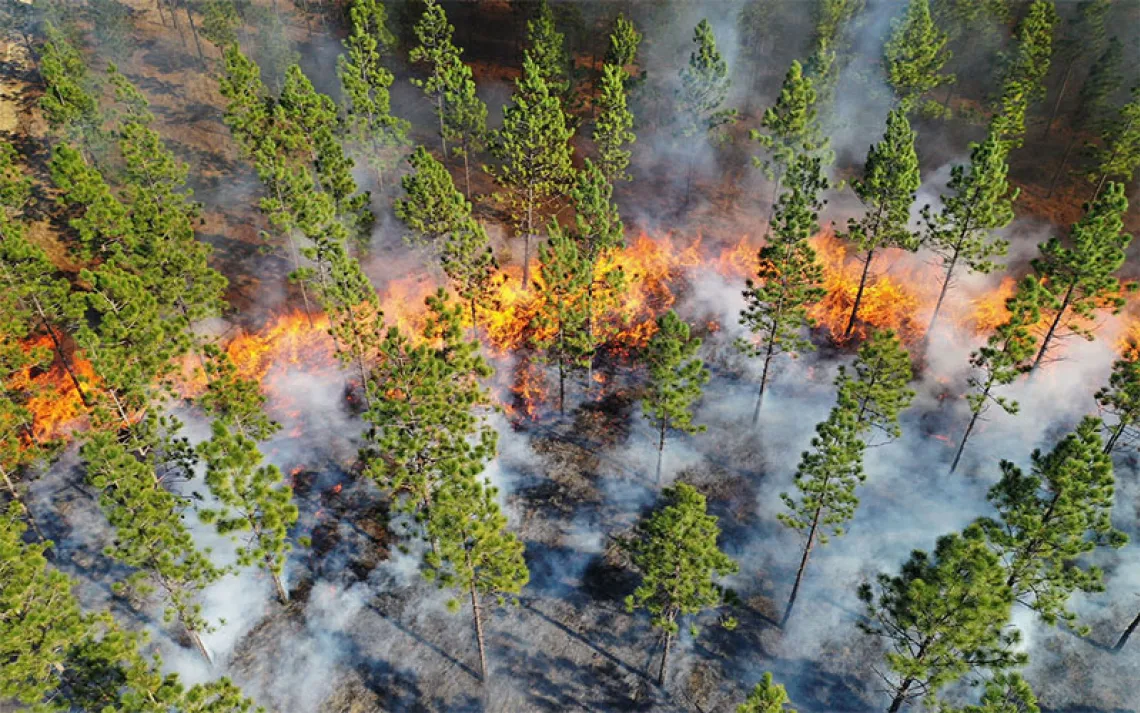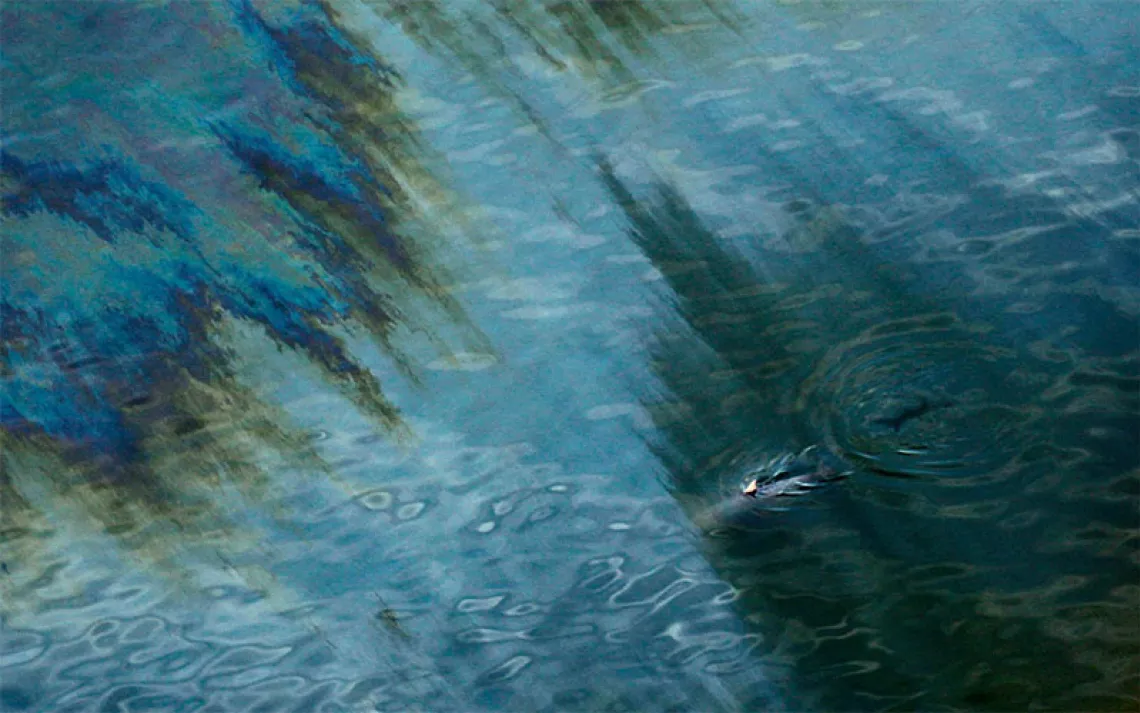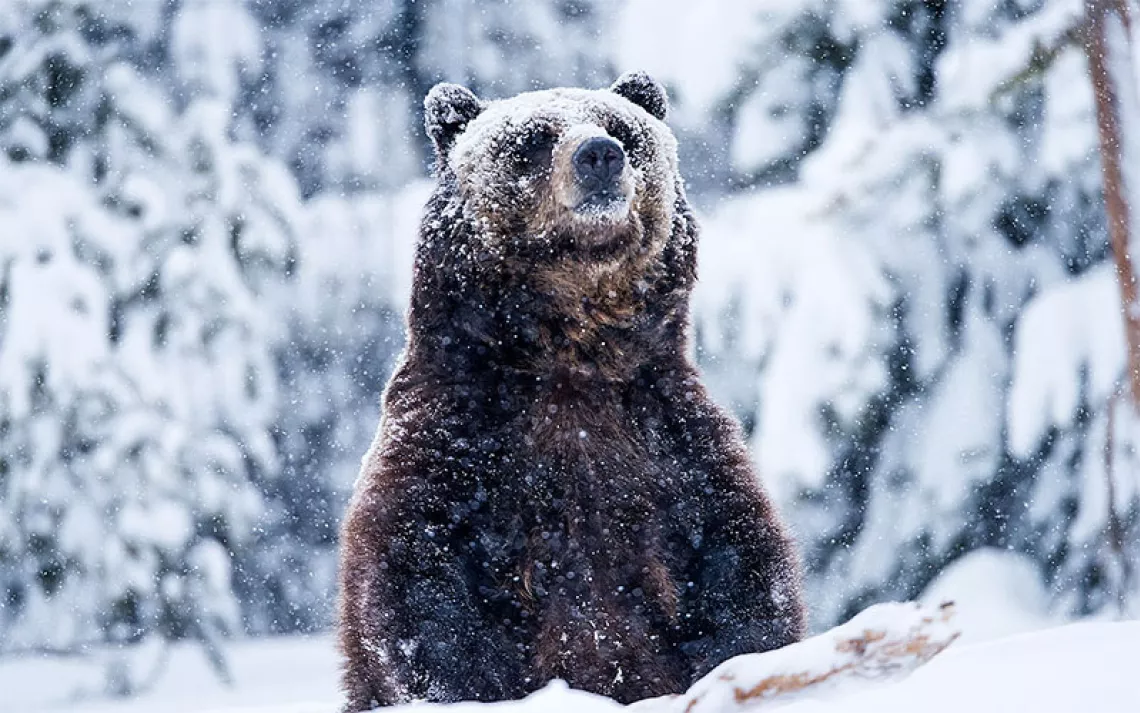Sage Spirit:The American West at a Crossroads
Photographs by Dave Showalter
Dave Showalter usually crawls out of the bed of his pickup around 3 AM to get into the the blind he set up the night before. He sits and waits, sometimes in subzero temperatures, hoping he’s in a good spot to photograph the Gunnison sage-grouse during its astonishing courtship display.
And then the birds arrive. “You hear a few wing-flaps followed by a few more,” Showalter told Sierra by phone. “You start to see the silhouettes and forget about your discomfort and anxiety. Those things just drift away and you become part of the grouse’s world for a short period of time.”
That world is on vivid display in Showalter’s recently published book, Sage Spirit: The American West at a Crossroads. In it, he explores the 11-state western ecosystem that provides critical habitat for the sage grouse and other species. A key flyway for migratory birds and the staging ground for ancient land migrations, the semiarid landscape is a hot spot of biodiversity. Its beauty lays in both the micro and macro—from the fist-size grassland birds that flit between tangles of sagebrush to the sweeping horizons blanketed by huge skies. Showalter captures it all in his photographs, weaving together images of the wild species that inhabit this landscape with the stories of the people determined to protect them.

Sign up to receive Sierra News & Views
Get articles like this one sent directly to your inbox weekly.
With this action you affirm you want to receive Sierra Club communications and may vote on policy designated by the Sierra Club Board.
Most of the species he photographs have experienced sharp population declines. Sage grouse, for example, have dropped from around 16 million birds to between 200,000 and 500,000 in the span of 200 years. Gunnison sage-grouse have been particularly hard hit—only about 5,000 remain. The Pinedale mule deer population in northwest Colorado is down by roughly 60 percent since drilling began on its winter range a little over a decade ago. The plight of these animals and others is emblematic of the rapid transformation underway as energy expansion, urban development, and improper land and water management place increasing pressure on the fragile sagebrush ecosystem.
Showalter depicts these changes, too, sometimes sleeping in gas fields to get the right photographs.
“The smell of hydrogen sulfide permeates the air,” he says. “You’re breathing toxic air and listening to the kerchunk kerchunk kerchunk of rigs going all night long. You’re sleeping in an industrial zone, and it’s not very comfortable.”
Sage Spirit provides a window into a landscape at a historical crossroads. Relatively large areas of undisturbed sagebrush still exist, and yet the steady influx of roads, power lines, agricultural fields, and oil and gas infrastructure threatens to further disrupt and divide remaining intact areas.
“You’re constantly contrasting the developed places with the wild ones. You have that wild benchmark in your mind of ‘This is what it was and what some of these places could continue to be if we do our job right,'” Showalter says. “Grizzly bears, pronghorn, mule deer, wolves, sage grouse, and hundreds of other species challenge us to think bigger, outside of boundaries drawn by humans, to see the West holistically, as inextricably linked natural systems on a landscape scale.”
To get the full scope of Showalter's work, pick up a copy of Sage Spirit, or learn more about the project at www.sagespirit.org.
 The Magazine of The Sierra Club
The Magazine of The Sierra Club








